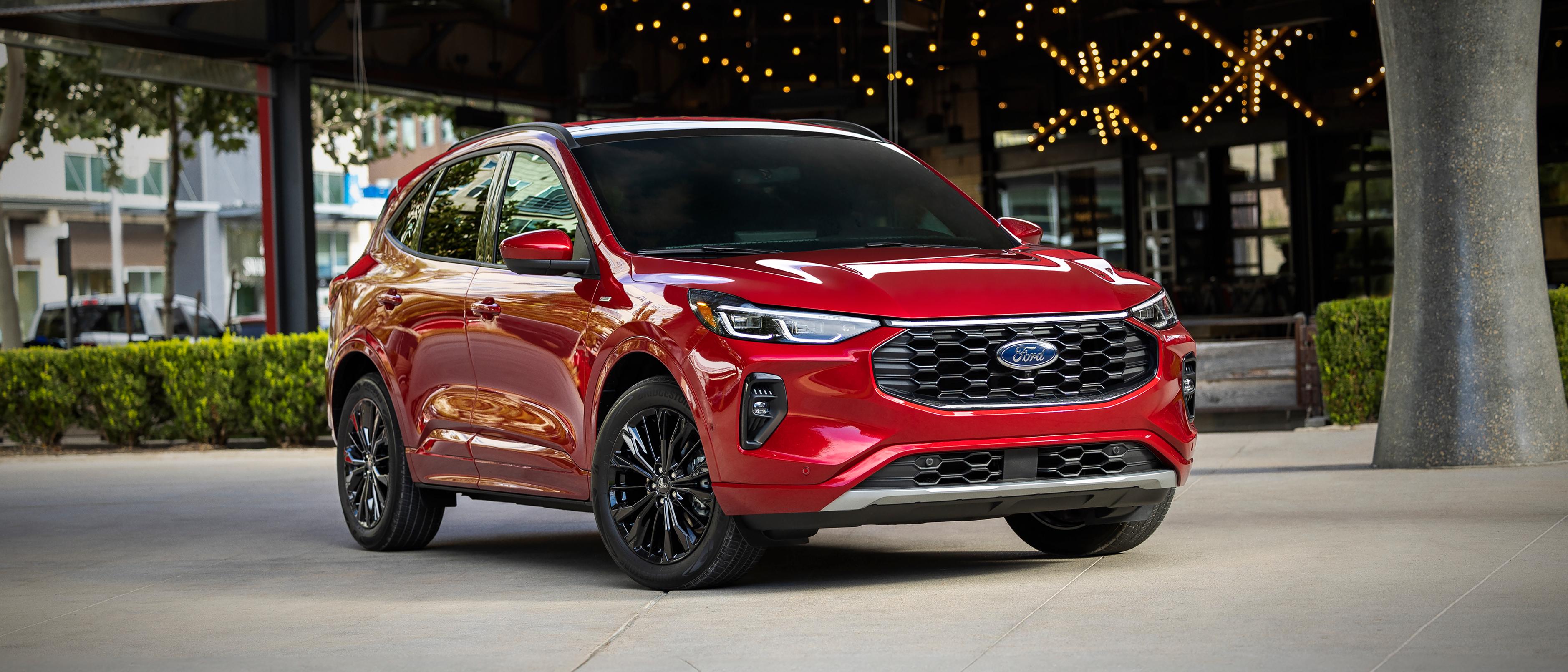The automotive world is changing faster than ever, and Ford is leading the charge into the future. As the Blue Oval transitions toward electric and hybrid power, a few familiar models will take their final bow by the end of the 2026 model year.
For loyal Ford drivers, this means saying goodbye to some trusted favorites — but it also means saying hello to an exciting new generation of vehicles built for performance, efficiency, and innovation.
At Kunes Auto Group, we know these updates can raise plenty of questions. Which Ford models are being discontinued for 2026? Why is Ford making these changes? And what comes next for the brand we’ve all grown to love?
Let’s take a deep dive into the models being phased out — and what Ford has planned for the future.
Ford Escape — Wrapping Up a Two-Decade Run
The Ford Escape has been one of the most recognizable names in the compact SUV market for over 20 years. First introduced in 2001, it quickly became a go-to choice for families and commuters thanks to its perfect mix of efficiency, utility, and comfort.
The current generation brought a refined cabin, advanced driver-assistance tech, and hybrid powertrain options that made it one of Ford’s most fuel-efficient SUVs. Yet, despite its continued popularity, 2026 will mark the end of the Escape’s production run.
Why Ford Is Ending the Escape
This decision is part of Ford’s broader plan to streamline its lineup and transition manufacturing capacity toward electric vehicles. The Louisville Assembly Plant, where the Escape is built, is being retooled to produce an all-new generation of electric SUVs and compact EV pickups.
Rather than refreshing the Escape again, Ford is focusing on electrified models that align with global emissions goals and consumer demand for modern tech-driven vehicles.
What Comes Next
While the Escape’s departure leaves a small gap in Ford’s compact lineup, the Bronco Sport is already proving to be a strong successor. Built on a similar platform but with a rugged, adventure-ready attitude, the Bronco Sport offers off-road capability, bold design, and hybrid potential in the coming years.
For current Escape owners and fans, the 2025 and 2026 models may be your last opportunity to own a piece of Ford SUV history — and possibly the best-built Escapes ever made.
Ford’s “Model T Moment” — Shifting Toward an Electric Future
Ford’s discontinuation decisions aren’t just about cutting costs — they represent a fundamental transformation of how the company builds, sells, and powers its vehicles.
The automaker has called this moment its “Model T moment,” referencing the early 1900s innovation that revolutionized personal transportation. This time, the revolution is electric.
By 2026, Ford plans to have:
- Multiple affordable EVs, including smaller SUVs and trucks built for everyday drivers.
- Hybrid options across key nameplates like the F-150, Maverick, and Escape replacements.
- Expanded fast-charging infrastructure to make EV ownership easier nationwide.
- Production flexibility to scale EV and hybrid vehicles quickly in response to demand.
The company has already proven its electric credibility with hits like the F-150 Lightning, Mustang Mach-E, and E-Transit, each showing that performance, power, and sustainability can coexist.
The next step is affordability — and that’s what Ford’s new lineup strategy aims to achieve.
What These Changes Mean for Ford Drivers
For current and future Ford owners, these discontinuations may bring mixed emotions. On one hand, it’s tough to see long-running models like the Escape go. On the other, it’s exciting to witness Ford doubling down on innovation, technology, and cleaner performance.
Here’s how this shift might affect you:
1. Buying Opportunities Before They’re Gone
The final production years for these vehicles could present unique opportunities for buyers. Dealerships like Kunes Ford may offer attractive financing or incentive programs as Ford transitions production toward new models.
2. Resale and Legacy Value
The last model years of discontinued vehicles often hold strong resale value — particularly when they represent the best versions of a nameplate. The 2026 Escape is likely to be remembered as the most advanced of its line.
3. Expanded Electric Options
By the time these models bow out, Ford will have introduced several new electric and hybrid options that fit similar segments. Shoppers will find comparable size and performance, with added benefits like instant torque, lower maintenance, and zero tailpipe emissions.
The Future Ford Lineup: What’s Next
So, what will Ford’s lineup look like after these models drive off into the sunset? Here’s what to expect as the brand’s transformation continues:
- Compact Segment: A new small electric SUV is expected to replace the Escape, offering similar size and practicality with fully electric power.
- Commercial Segment: The E-Transit and future electric vans will continue expanding Ford’s leadership in commercial electrification.
- Performance & Lifestyle: Vehicles like the Bronco, Ranger, and Mustang Mach-E will continue to evolve, bridging Ford’s adventurous spirit with modern efficiency.
At Kunes Auto Group, our Ford dealerships are already preparing for this next generation of vehicles. Whether you’re looking for one of the final gas-powered models or ready to make the jump to electric, our team will help you find the right fit.
Ford’s Evolution Is Just Beginning
While it’s bittersweet to say goodbye to some long-standing favorites, the 2026 model year marks a pivotal turning point for Ford — one that looks forward, not back.
At Kunes Auto Group, we’re proud to be part of this transformation and to help our customers navigate it with confidence. Because whether your next Ford is powered by gas, hybrid, or pure electricity — one thing’s certain: it’ll always be Built Ford Tough.

